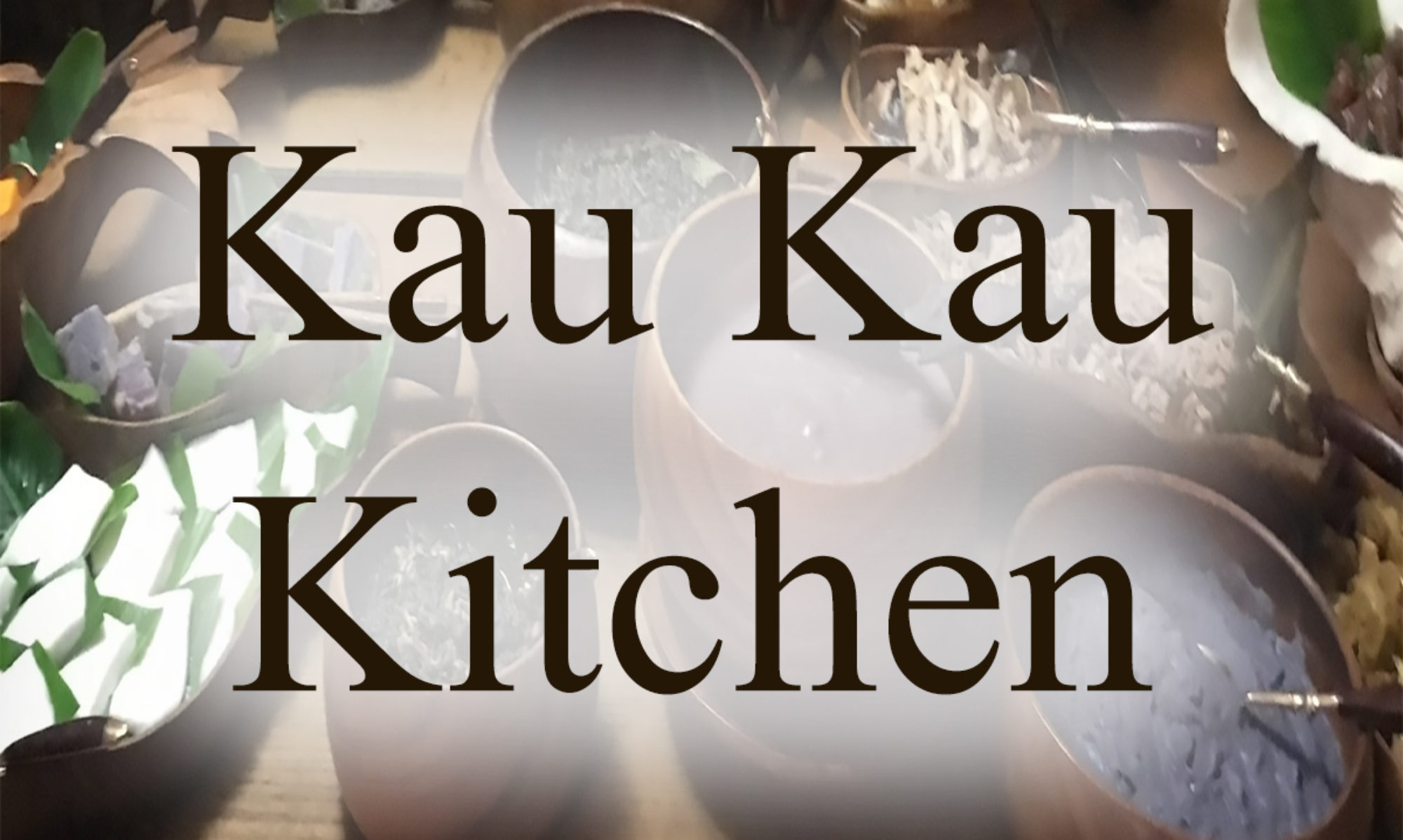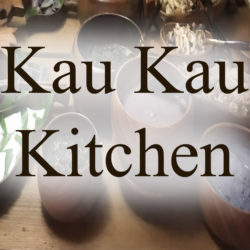The first “local” party a lot of new island residents attend is the “baby lūʻau.” I know, because I get a lot of e-mails and facebook messages along the lines of “I just got invited to something called a ‘baby lūʻau.’ What is it, and do I need to take a gift? What kind of gift? Is it very formal? How should I dress?”
Short Form:
It’s a Baby’s First Birthday party.
Yes, take a gift.
Cash or check in a nice card remains the most commonly given makana. How much is up to you – a good guide is to think of what you would spend to buy a gift, and give that amount. To make sure I’m not totally out of date, I asked a good number of my friends what is considered appropriate these days. “Money” was the unanimous answer as a first choice. Lei for the parents also were mentioned. One friend, however, pointed out that if the parents have a lot of help and can enjoy their lei, they are nice. But if the parents don’t have that much help, and will be working hard, then the lei will have to be set aside. Kōkua also was a gift suggestion – show up and help out. Making lei for special guests such as the kahu, doctor, godparents, and such might be greatly appreciated. It’s perfectly fine to ask the parents or other family member who are involved in planning.
Generally, a baby lūʻau is not terribly formal. They are often held out of doors and at a park so the children can play.
If in doubt, show up in your party clothes and have a change plus towel in your car, especially if it is at a beach park.
Long Form:
A baby lūʻau is an aha ʻaina, a feast, held to celebrate a child’s first birthday. It may have its origins in the aha-ʻaina-ukuhi, the weaning feast. In the aha-ʻaina-ukuhi, specifics depending on the family, certain foods or objects would be placed in front of the child. After prayers, the officiant then questions the child, asking if the little one is ready to give up the milk. The mother, acting as proxy, answers on baby’s behalf. If the child reaches for the food or object, then the ceremony is successful and a feast is held. If the child is uninterested in the food or objects, the child is not ready for weaning, and the ceremony has failed. It must be tried again later.
Another ceremony which might happen along with the aha-ʻaina-ukuhi is one in which a number of items, such as fishing tackle, kapa beaters, an adz – today toys such as carpenters’ tools, cooking sets, and other toys might be used, are placed in front of the child. The family watches to see what attracts the child as a way to predict the baby’s future career.
Ceremonial foods used in the aha-ʻaina-ukuhi can include bananas and chicken, and these can be found at baby lū`autoday. But whether they are a holdover, or served simply because they taste really good – that answer lies with the individual `ohana.
Serving special foods to celebrate a child’s first year is a global tradition. Not all that long ago, many children around the world did not survive their first year. In some societies, a child did not even get a “real” name until the first birthday. But a child who survived that first critical year was likely to grow into adulthood. So it truly was an event to celebrate!
As people of different cultures joined our island community, they brought their own traditions. In China, a child’s first birthday, zhuazhou, is one of the most important traditional customs. The Chinese parents also will seek to predict the child’s future by placing tools and other objects within reach and watching to see what attracts the child. Long noodles, symbolizing long life, will be served at the meal. So many Hawaiian families include Chinese, maybe that is one reason chicken long-rice is such a popular dish at a baby lū`a. Or, again, maybe it just tastes good!
When I was a girl, many Hilo baby lūʻau were held at Wailoa Park. Each ʻohana has its own traditions, of course, but those baby lūʻau I remember attending generally followed this plan.
The “set-up crew” would arrive first thing in the morning and clean the large pavilion. The nearby grill and the inside grills were brushed and swept. The inside grill would be where the auntys would work, and the chicken lūʻau, laulau, Portuguese bean soup, chicken long rice, and other such items would be kept hot. The outside grill was where the men would pulehu, grill, fish, pork, and beef ribs. In those days, many people would catch a pig or buy a calf right after the baby was born and fatten the animal just for the baby lūʻau.
The Hawai`i Tribune Herald used to sell the ends of the newsprint rolls, and one or two would be bought to cover the tables. In my recollection, that was a favorite job for youngsters. First, unroll enough of the newsprint to wrap one end of the long table. Thumbtack the end securely in place. Give the roll a shove! The idea was to see how far it would go before you needed to steer it straight again. Great fun when all went well, and a fast way to cover the tables. But, if the newsprint fell to the ground. . . well, best not to go there.
Down the center of the table, on top of the newsprint, ti leaves, monstera, and other beautiful greens would be laid. On those, flowers would be scattered. Fluffy hibiscus, brilliant anthurium, and fragrant plumeria, heads of bright red and sweet white and yellow ginger added color. And, nestled among the foliage, bottle after bottle of jelly-bean colored soda from the Hilo Soda Works. Recently, while cleaning the yard, I found one of their old bottles. So many memories!
Someone would have brought buckets, Spic-n-Span cleaner, and old rags. It was the job of those whose hands were level with the benches to scrub them. How embarrassing if some guests had soiled clothing from sitting on a dirty bench!
By the time everything was clean, the people with the coolers were starting to arrive. Some coolers were lined with towels because they held the hot foods. The coolers were staged near where their contents would be cooked, warmed, or served.
And such food! Opihi, ʻaʻama, ʻamaʻama, and every reef fish imaginable. Lomi salmon, laulau, sweet potato, poi. Pork blood, kalua pig, pipi kaula, rice. ʻAke, ʻopelu, and aku belly. Portuguese sweet bread, and rice.
The aromas from the huge cooking pots filled the park, and the tang of kiawe smoke announced more to come!
At some point the guest of honor and his or her mother would arrive. All dressed up in a tiny aloha shirt or muʻumuʻu, carried in by Mom or Grandma, and usually fast asleep and oblivious to all. Doting adults took turns carrying the royal bundle about as Mom helped with the final preparations. Dad generally already had been there from the start.
Early-arrival guests soon followed, and some older girls would pair up and sit at the gift table. This table, too, was decorated with foliage. A beautiful ʻumeke or calabash, adorned with lei, held pride of place. Cards, with some cash tucked inside, began to fill it. Lei were brought for the parents, and sometimes the grandparents. If the parents were working hard at cooking and caring for their guests, the lei were draped on the table for all to admire.
As more cars rolled into the parking lot, gallon-sized coffee cans were set out on the edges of the path, and along the river bank. Some children were set the task of dropping a roll of toilet paper into each one, and a teenage boy or a man followed, pouring kerosene over the rolls. A strange site in the day, but at dusk, as the final guests arrived, the cans were lit and someone tuned a guitar. A bass followed suit, and more guitars and `ukulele. The uncles and auntys began to sing and the park became a musical wonderland, filled with the warmth of laughter, firelight, and dancing shadows.
With all gathered together, the parents, baby, and grandparents were called to the stage, along with the kahu who married them. “E pule kākou!” and the kahu led the prayer. The party had officially begun!
People took turns playing music and singing, and all the girls, and some of the boys were expected to dance hula. As the evening wore on, the auntys and uncles also danced. A futon would be placed near the gift table, and the smaller children curled up on it with treats, books, or some small toy, and began to drift off to sleep.
At last the lūʻau wound down. The tired parents were sent home, and the ʻohana and close friends packed and cleaned and put everything away. Remaining food were packed up and sent home with everyone who was still there. The kerosene “torches” had burned out and cooled, and could safely have their lids snapped back on and be put in the bed of someone’s truck.
A new member of the community had been properly welcomed.
Bibliography for Baby Luau
Hawaiian Customs Green & Beckwith http://onlinelibrary.wiley.com/doi/10.1525/aa.1924.26.2.02a00060/pdf

